Abarth 500 595 695 vs Toyota C-HR – Which model is better for everyday use?
Two cars, one duel: Abarth 500 595 695 meets Toyota C-HR.
Which one wins in performance, efficiency and value for money? Find out now!
Costs and Efficiency:
Looking at overall running costs, both models reveal some interesting differences in everyday economy.
Toyota C-HR has a slightly advantage in terms of price – it starts at 29100 £, while the Abarth 500 595 695 costs 32600 £. That’s a price difference of around 3428 £.
As for range, the Abarth 500 595 695 performs convincingly better – achieving up to 265 km, about 197 km more than the Toyota C-HR.
Engine and Performance:
Power, torque and acceleration say a lot about how a car feels on the road. This is where you see which model delivers more driving dynamics.
When it comes to engine power, the Toyota C-HR has a noticeable edge – offering 223 HP compared to 155 HP. That’s roughly 68 HP more horsepower.
In acceleration from 0 to 100 km/h, the Abarth 500 595 695 is hardly perceptible quicker – completing the sprint in 7 s, while the Toyota C-HR takes 7.40 s. That’s about 0.40 s faster.
In terms of top speed, the Toyota C-HR performs to a small extent better – reaching 180 km/h, while the Abarth 500 595 695 tops out at 155 km/h. The difference is around 25 km/h.
Space and Everyday Use:
Whether family car or daily driver – which one offers more room, flexibility and comfort?
Seats: Toyota C-HR offers somewhat more seating capacity – 5 vs 4.
In curb weight, Abarth 500 595 695 is minimal lighter – 1410 kg compared to 1505 kg. The difference is around 95 kg.
In terms of boot space, the Toyota C-HR offers convincingly more room – 447 L compared to 185 L. That’s a difference of about 262 L.
In maximum load capacity, the Toyota C-HR performs clearly better – up to 1155 L, which is about 605 L more than the Abarth 500 595 695.
When it comes to payload, Toyota C-HR slight takes the win – 425 kg compared to 385 kg. That’s a difference of about 40 kg.
Who wins the race?
The Toyota C-HR proves to be leaves the rival little chance and therefore becomes our DriveDuel Champion!
Toyota C-HR is the better all-rounder in this comparison.
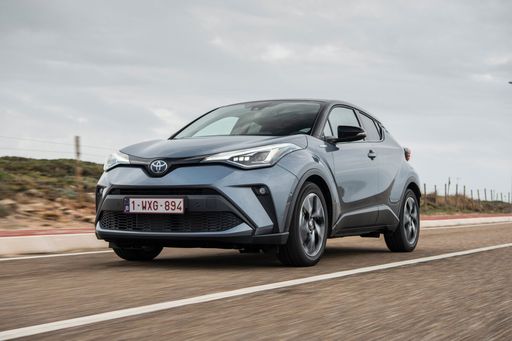 @ Toyota Motor Corporation
@ Toyota Motor Corporation
Toyota C-HR
Abarth 500 595 695
The Abarth 500, particularly in its 595 and 695 renditions, captures the spirit of Italian motoring with its compact yet aggressive design. Known for its lively performance and distinctive styling, this little powerhouse is a joy to drive, offering an engaging experience that appeals to enthusiasts. With its rich motorsport heritage, the Abarth 500 embodies the essence of fun and excitement on both the streets and the race track.
details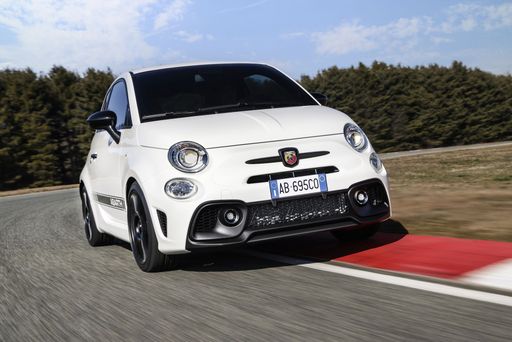 @ Abarth / Stellantis Media
@ Abarth / Stellantis Media
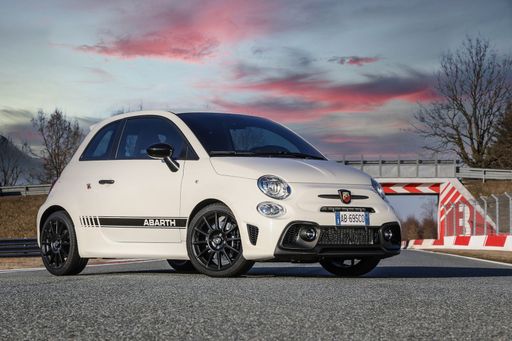 @ Abarth / Stellantis Media
@ Abarth / Stellantis Media
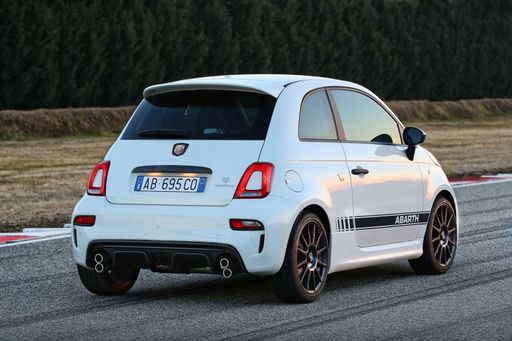 @ Abarth / Stellantis Media
@ Abarth / Stellantis Media
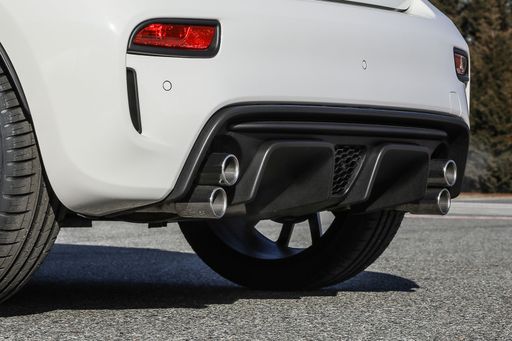 @ Abarth / Stellantis Media
@ Abarth / Stellantis Media
 @ Abarth / Stellantis Media
@ Abarth / Stellantis Media
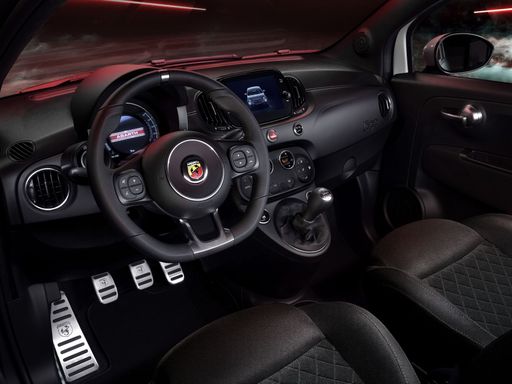 @ Abarth / Stellantis Media
@ Abarth / Stellantis Media
Toyota C-HR
The Toyota C-HR stands out with its distinctive and bold design that combines sleek, angular lines with a sporty posture. Its comfortable and stylish interior is equipped with advanced technology features, providing a seamless driving experience. The vehicle offers impressive handling and performance, making it a compelling choice for those who appreciate a blend of practicality and flair on the road.
details @ Toyota Motor Corporation
@ Toyota Motor Corporation
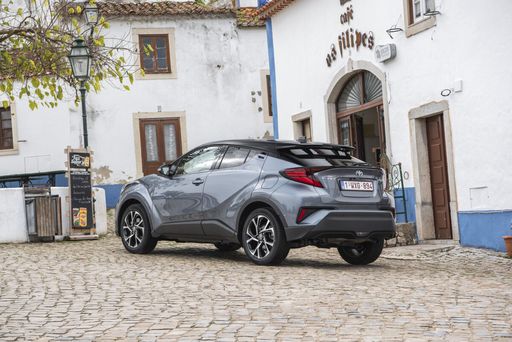 @ Toyota Motor Corporation
@ Toyota Motor Corporation
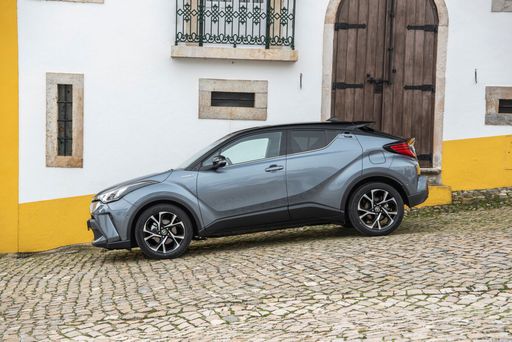 @ Toyota Motor Corporation
@ Toyota Motor Corporation
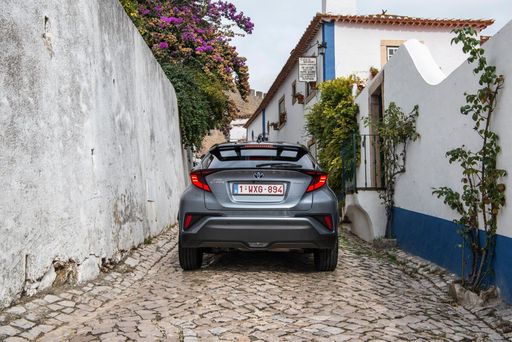 @ Toyota Motor Corporation
@ Toyota Motor Corporation
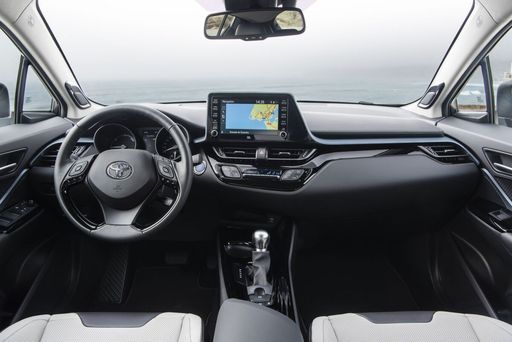 @ Toyota Motor Corporation
@ Toyota Motor Corporation
 @ Abarth / Stellantis Media
@ Abarth / Stellantis Media
|
 @ Toyota Motor Corporation
@ Toyota Motor Corporation
|
|
|
|
Costs and Consumption |
|
|---|---|
|
Price
32600 - 39400 £
|
Price
29100 - 42800 £
|
|
Consumption L/100km
-
|
Consumption L/100km
0.8 - 5.1 L
|
|
Consumption kWh/100km
17.1 - 18.8 kWh
|
Consumption kWh/100km
-
|
|
Electric Range
242 - 265 km
|
Electric Range
68 km
|
|
Battery Capacity
37.80 kWh
|
Battery Capacity
-
|
|
co2
0 g/km
|
co2
17 - 115 g/km
|
|
Fuel tank capacity
-
|
Fuel tank capacity
43 L
|
Dimensions and Body |
|
|---|---|
|
Body Type
Hatchback
|
Body Type
SUV
|
|
Seats
4
|
Seats
5
|
|
Doors
3
|
Doors
5
|
|
Curb weight
1410 - 1435 kg
|
Curb weight
1505 - 1755 kg
|
|
Trunk capacity
185 L
|
Trunk capacity
350 - 447 L
|
|
Length
3673 mm
|
Length
4362 mm
|
|
Width
1682 mm
|
Width
1832 mm
|
|
Height
1518 mm
|
Height
1558 - 1564 mm
|
|
Max trunk capacity
550 L
|
Max trunk capacity
1076 - 1155 L
|
|
Payload
370 - 385 kg
|
Payload
375 - 425 kg
|
Engine and Performance |
|
|---|---|
|
Engine Type
Electric
|
Engine Type
Full Hybrid, Plugin Hybrid
|
|
Transmission
Automatic
|
Transmission
Automatic
|
|
Transmission Detail
-
|
Transmission Detail
CVT
|
|
Drive Type
Front-Wheel Drive
|
Drive Type
Front-Wheel Drive, All-Wheel Drive
|
|
Power HP
155 HP
|
Power HP
140 - 223 HP
|
|
Acceleration 0-100km/h
7 s
|
Acceleration 0-100km/h
7.4 - 9.9 s
|
|
Max Speed
155 km/h
|
Max Speed
175 - 180 km/h
|
|
Torque
235 Nm
|
Torque
-
|
|
Number of Cylinders
-
|
Number of Cylinders
4
|
|
Power kW
114 kW
|
Power kW
103 - 164 kW
|
|
Engine capacity
-
|
Engine capacity
1798 - 1987 cm3
|
General |
|
|---|---|
|
Model Year
2023
|
Model Year
2024 - 2025
|
|
CO2 Efficiency Class
A
|
CO2 Efficiency Class
C, B
|
|
Brand
Abarth
|
Brand
Toyota
|
Is the Abarth 500 595 695 offered with different drivetrains?
The Abarth 500 595 695 is offered with Front-Wheel Drive.
The prices and data displayed are estimates based on German list prices and may vary by country. This information is not legally binding.
